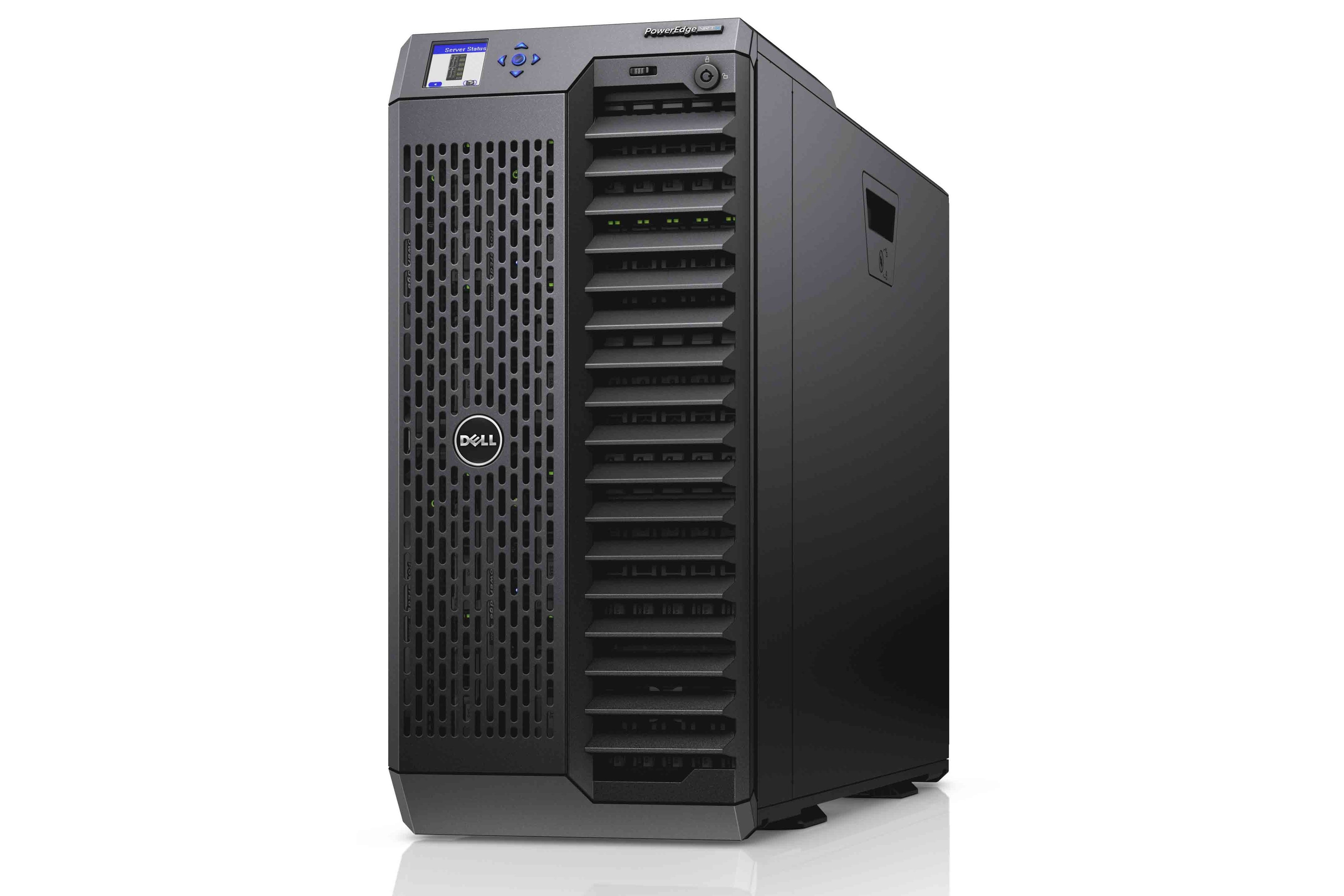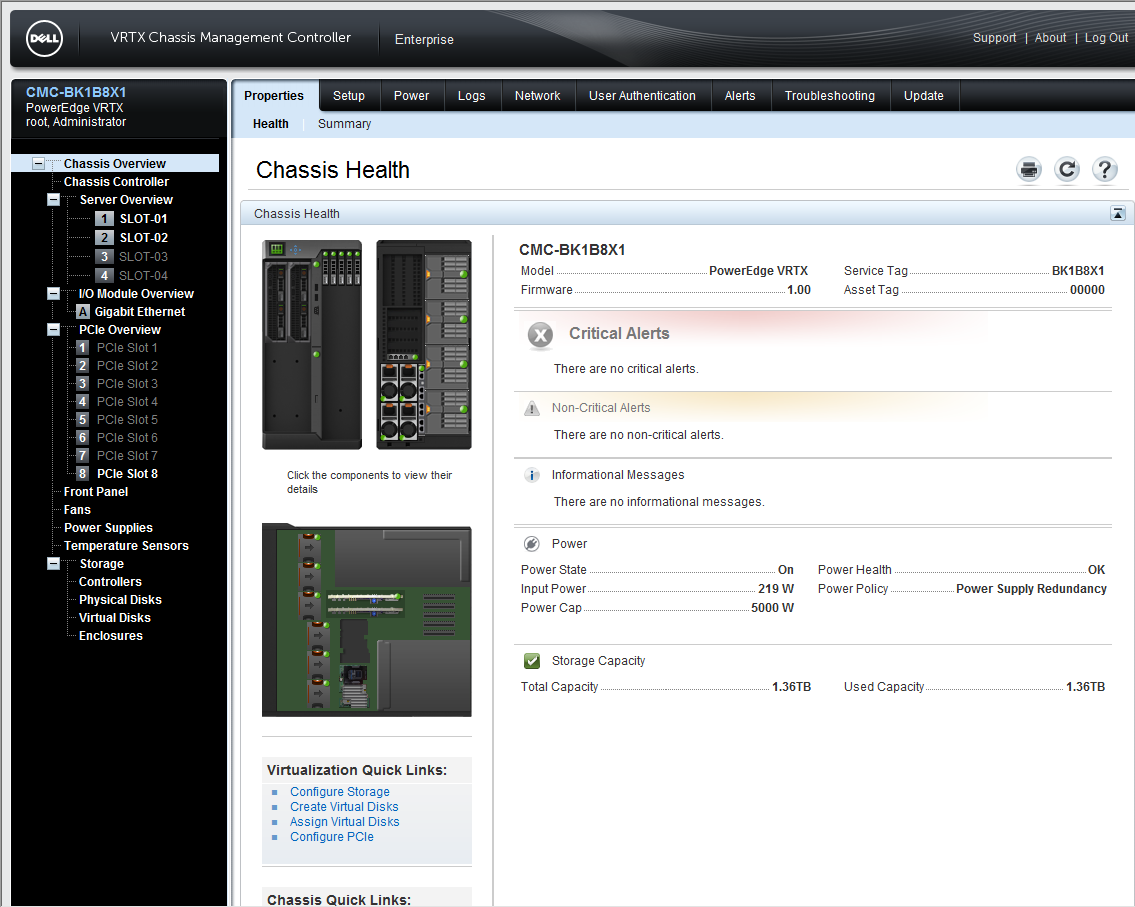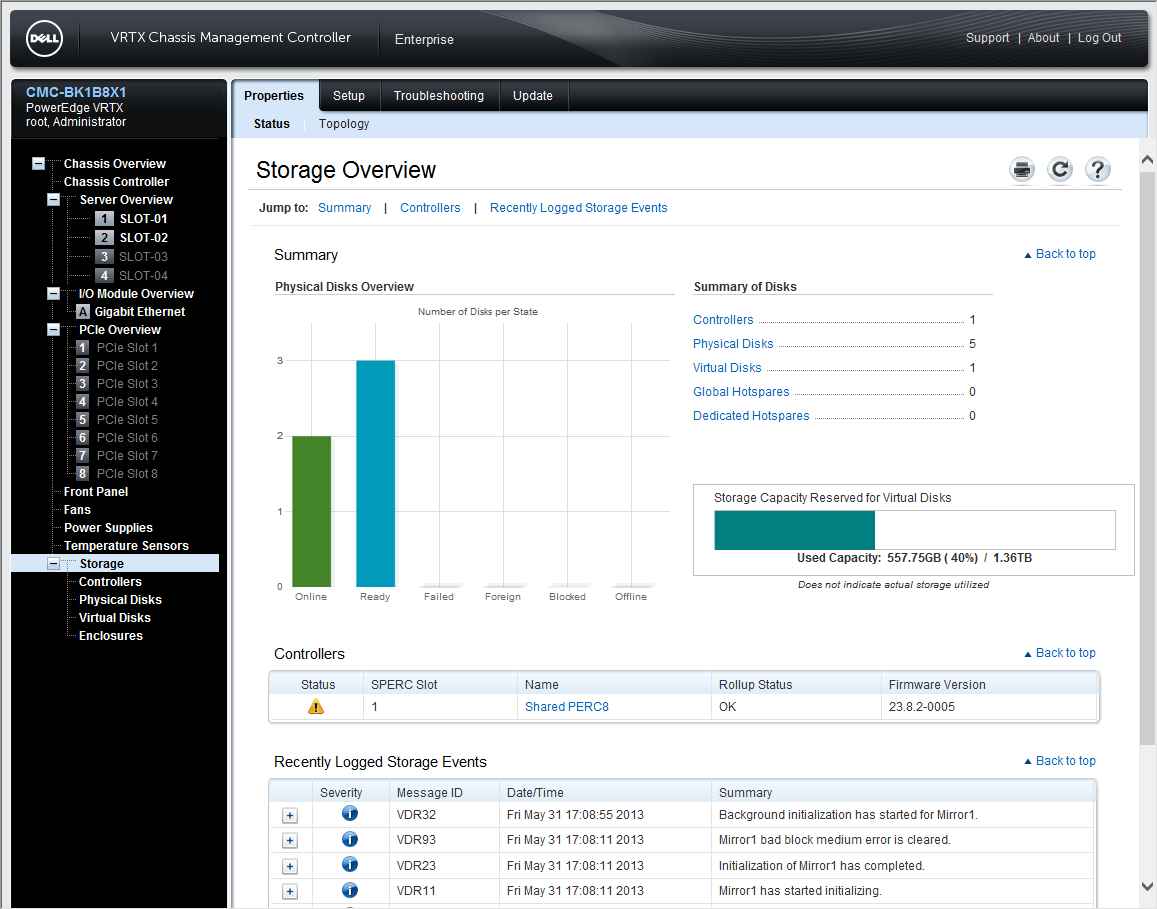Dell PowerEdge VRTX review
Dell makes blade servers affordable for SMBs with its unique design.


SMBs and remote offices looking to consolidate IT services on a single hardware platform should consider Dell’s new PowerEdge VRTX. It’s far more affordable than a blade server and its unique storage and PCI-e shared architecture makes it very versatile.
-
+
Clever design; More affordable than blade servers; Low noise and power consumption; Excellent remote management
-
-
It’s heavy so get the wheels for the pedestal model

Shared PCI-e architecture
Another clever design feature is the VRTX's PCI-e architecture. The chassis has eight PCI-e Gen2 slots which can be assigned to any server node using the management interface.
Advantages over blade servers are obvious as the VRTX doesn't lock you into proprietary I/O solutions. If you want to connect a node to an FC SAN you just buy a standard FC HBA. A blade server would require an FC mezzanine card fitted to the server blade and an FC SAN I/O module installed at the back.
Each VRTX node also has a 10GbE mezzanine card which links directly via the midplane to an 8-port switch at the rear. This is a basic L2 Gigabit switch and Dell advised us it plans to offer a 10GbE version as well.

The CMC web interface provides full remote access to all VRTX chassis components
Power and noise
The chassis supports up to four redundant 1100W hot-plug PSUs. Cooling is handled by four hot-plug fan modules at the rear plus six more inside and noise levels are impressively low.
Our review system came with all four PSUs and two M620 dual 2GHz E5-2650 server nodes. We also found power consumption to be low with the chassis drawing 185W.
One node with Windows Server 2012 in idle increased this to 272W which went up to 338W with the second node. Using SiSoft Sandra, we recorded peak draws of 405W for one server node and 604W for both.

Chassis storage can be carved up into RAID protected virtual disks and assigned to specific server nodes
Remote management
A small colour LCD panel and keypad at the front provide local access for basic configuration and monitoring. There's also a KVM module below which can be assigned to any node using the keypad.
The web interface for the chassis management controller (CMC) is well designed and provides full access to all components. It opens with graphical views of the front and rear of the chassis plus fault alerts and overviews of storage and power usage.
Quick links for common tasks are provided and we found assigning virtual disks and PCI-e slots to the nodes simple enough. The menu to the left provides access to each node and along with power controls you can directly access their own iDRAC7 controller.
Pricing
Pricing has yet to be confirmed but Dell provided us with a guide price of 8,600 ex VAT for a base system. This includes two M520 nodes each with a 1.8GHz E5-2403 Xeon, 8GB of DDR3, a 500GB SATA drive and Dell's iDRAC7 Express controller.
The chassis comes with a single CMC, dual 1100W PSUs and three 1TB Near-Line SAS drives. This price also includes Dell's standard three year NBD warranty for the chassis and nodes.
Overall
The PowerEdge VRTX takes blade server technology, adds a few twists of its own and makes it more affordable for SMBs. It's built like a tank, is easy to manage and its shared storage and PCI-e architecture adds extra levels of versatility you won't find in blade servers.
Verdict
SMBs and remote offices looking to consolidate IT services on a single hardware platform should consider Dell’s new PowerEdge VRTX. It’s far more affordable than a blade server and its unique storage and PCI-e shared architecture makes it very versatile.
Chassis: 5U rack or pedestal Shared storage: 12 x LFF or 25 x SFF hot-swap hard disk bays RAID: Shared PERC8 (max 2) Array support: RAID0, 1, 10, 5, 6 Expansion: 8 x PCI-e Gen2 Network: 8-port L2 Gigabit switch blade Power: 1100W hot-plug PSUs (min 2, max 4) Management: Dell CMC Enterprise (max 2 CMCs) Server Nodes: Dell PowerEdge M520 or M620 (max 4) Warranty: 3yrs on site NBD on chassis and nodes
Get the ITPro daily newsletter
Sign up today and you will receive a free copy of our Future Focus 2025 report - the leading guidance on AI, cybersecurity and other IT challenges as per 700+ senior executives
Dave is an IT consultant and freelance journalist specialising in hands-on reviews of computer networking products covering all market sectors from small businesses to enterprises. Founder of Binary Testing Ltd – the UK’s premier independent network testing laboratory - Dave has over 45 years of experience in the IT industry.
Dave has produced many thousands of in-depth business networking product reviews from his lab which have been reproduced globally. Writing for ITPro and its sister title, PC Pro, he covers all areas of business IT infrastructure, including servers, storage, network security, data protection, cloud, infrastructure and services.
-
 ‘Phishing kits are a force multiplier': Cheap cyber crime kits can be bought on the dark web for less than $25 – and experts warn it’s lowering the barrier of entry for amateur hackers
‘Phishing kits are a force multiplier': Cheap cyber crime kits can be bought on the dark web for less than $25 – and experts warn it’s lowering the barrier of entry for amateur hackersNews Research from NordVPN shows phishing kits are now widely available on the dark web and via messaging apps like Telegram, and are often selling for less than $25.
By Emma Woollacott Published
-
 Redis unveils new tools for developers working on AI applications
Redis unveils new tools for developers working on AI applicationsNews Redis has announced new tools aimed at making it easier for AI developers to build applications and optimize large language model (LLM) outputs.
By Ross Kelly Published
-
 Google layoffs continue with "hundreds" cut from Chrome, Android, and Pixel teams
Google layoffs continue with "hundreds" cut from Chrome, Android, and Pixel teamsNews The tech giant's efficiency drive enters a third year with devices teams the latest target
By Bobby Hellard Published